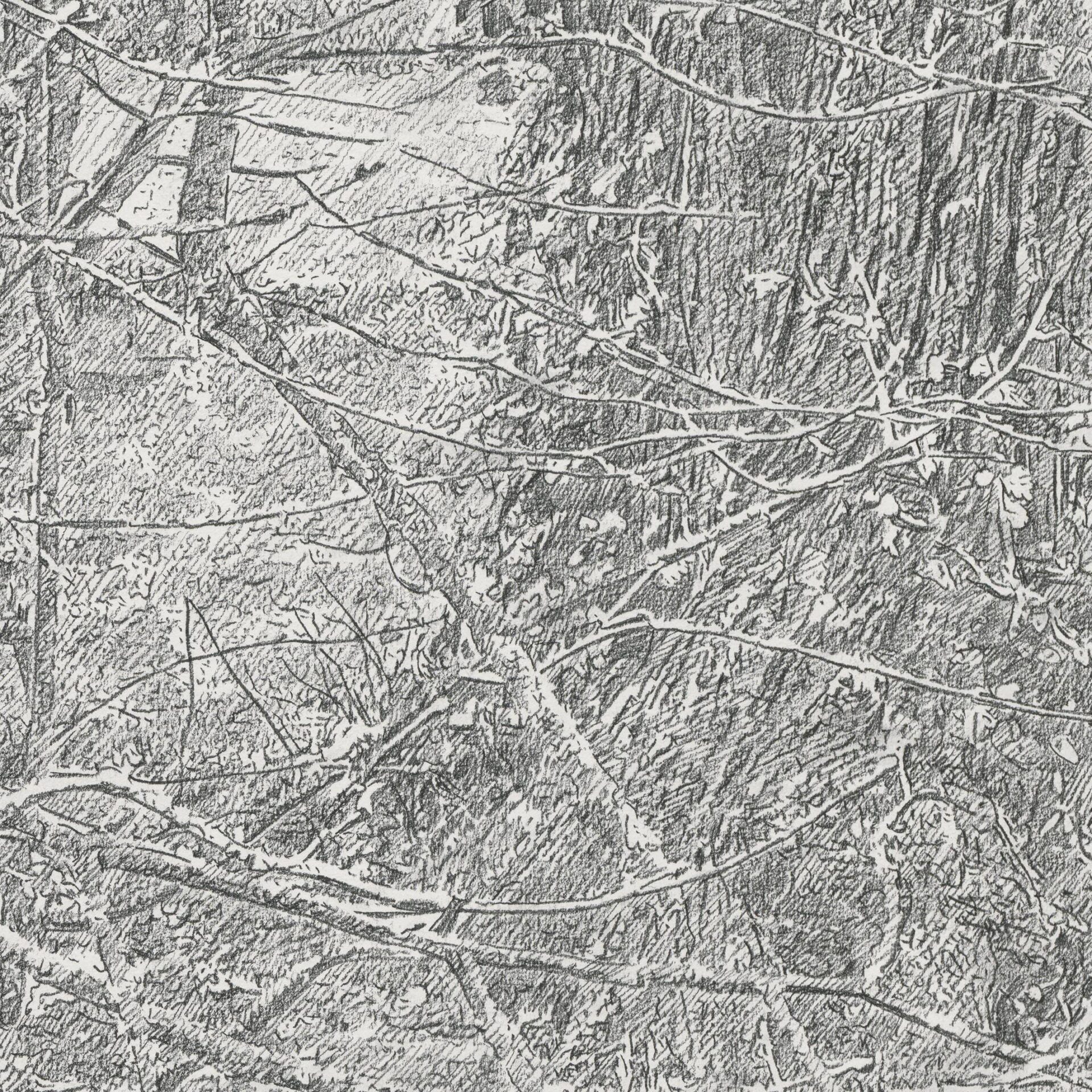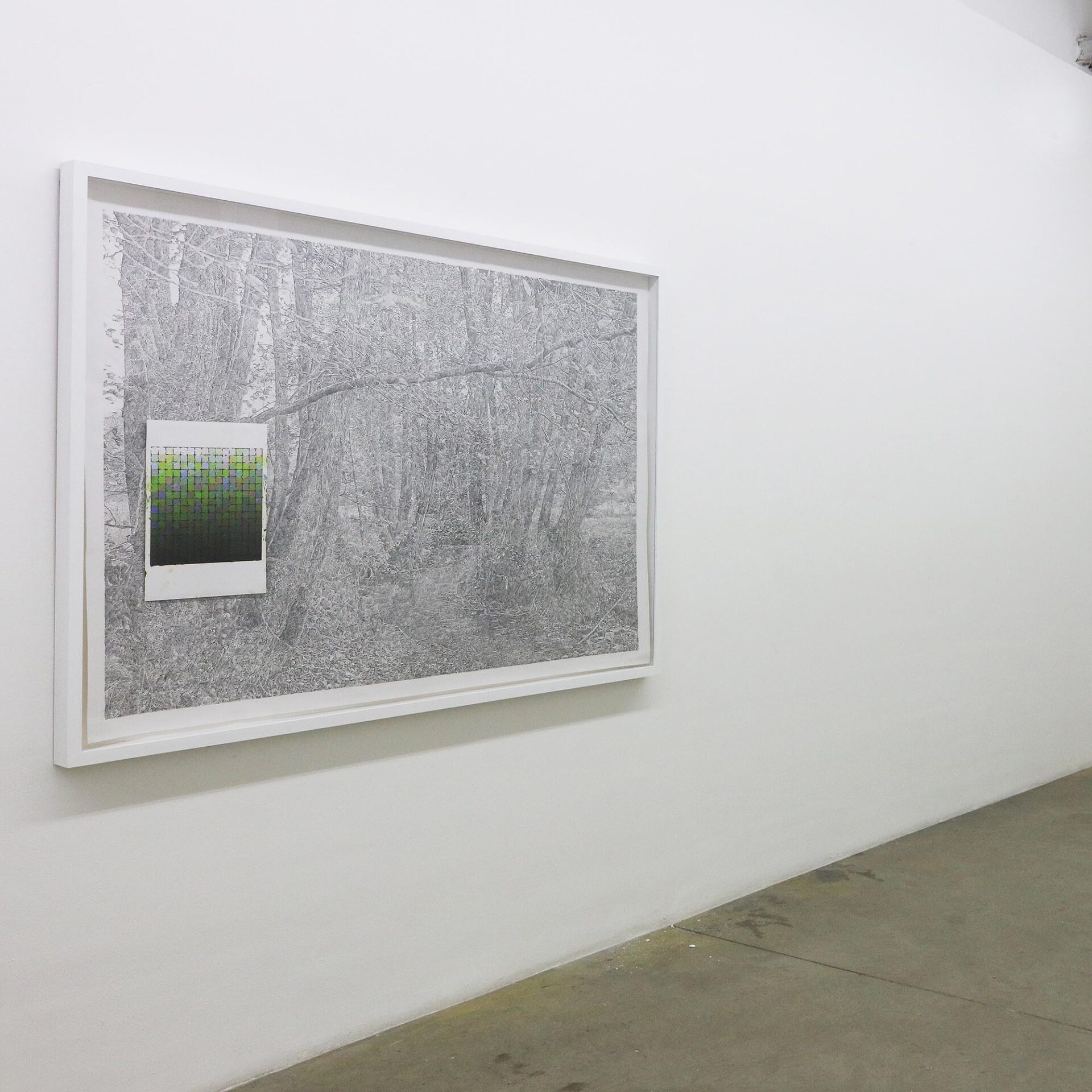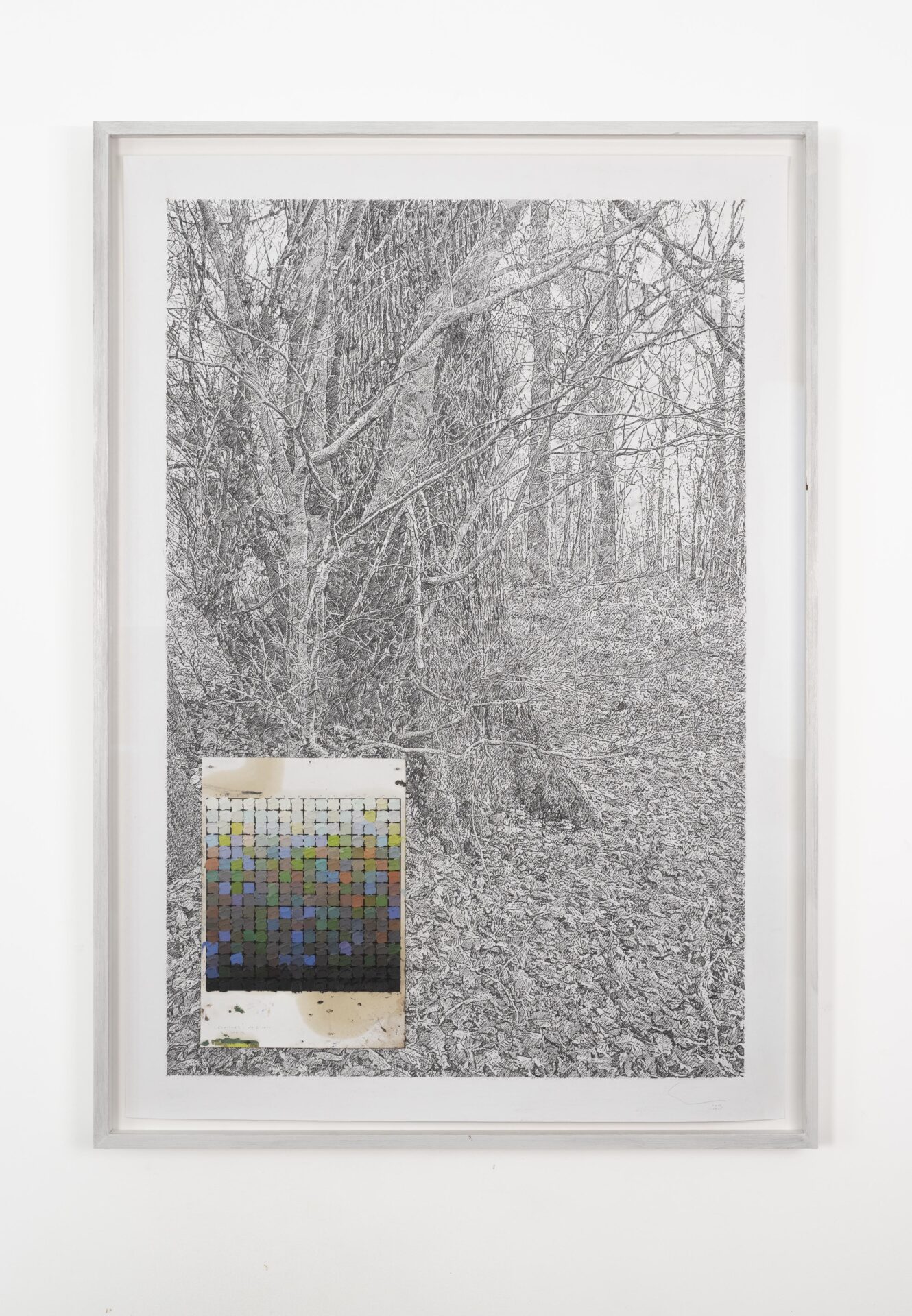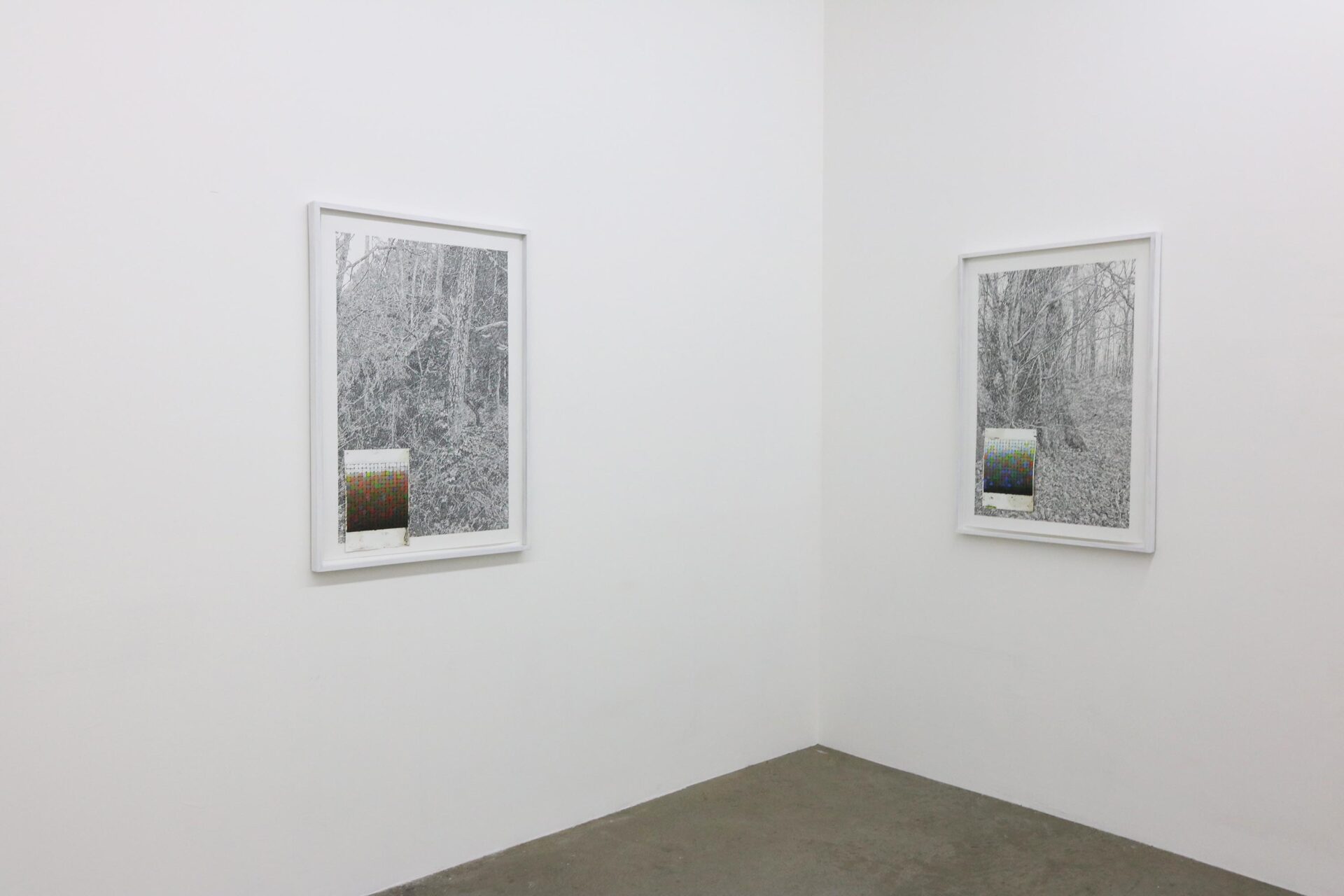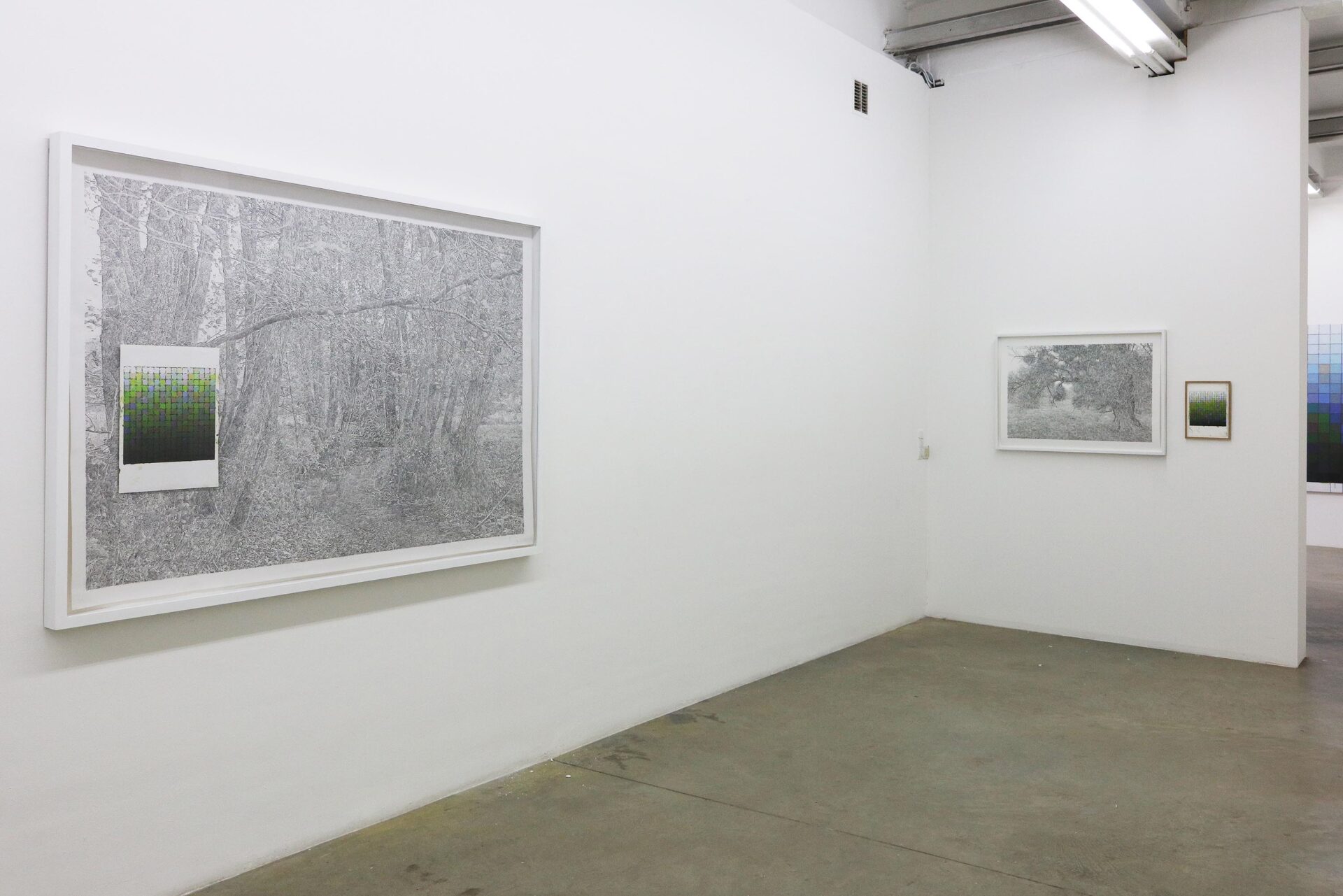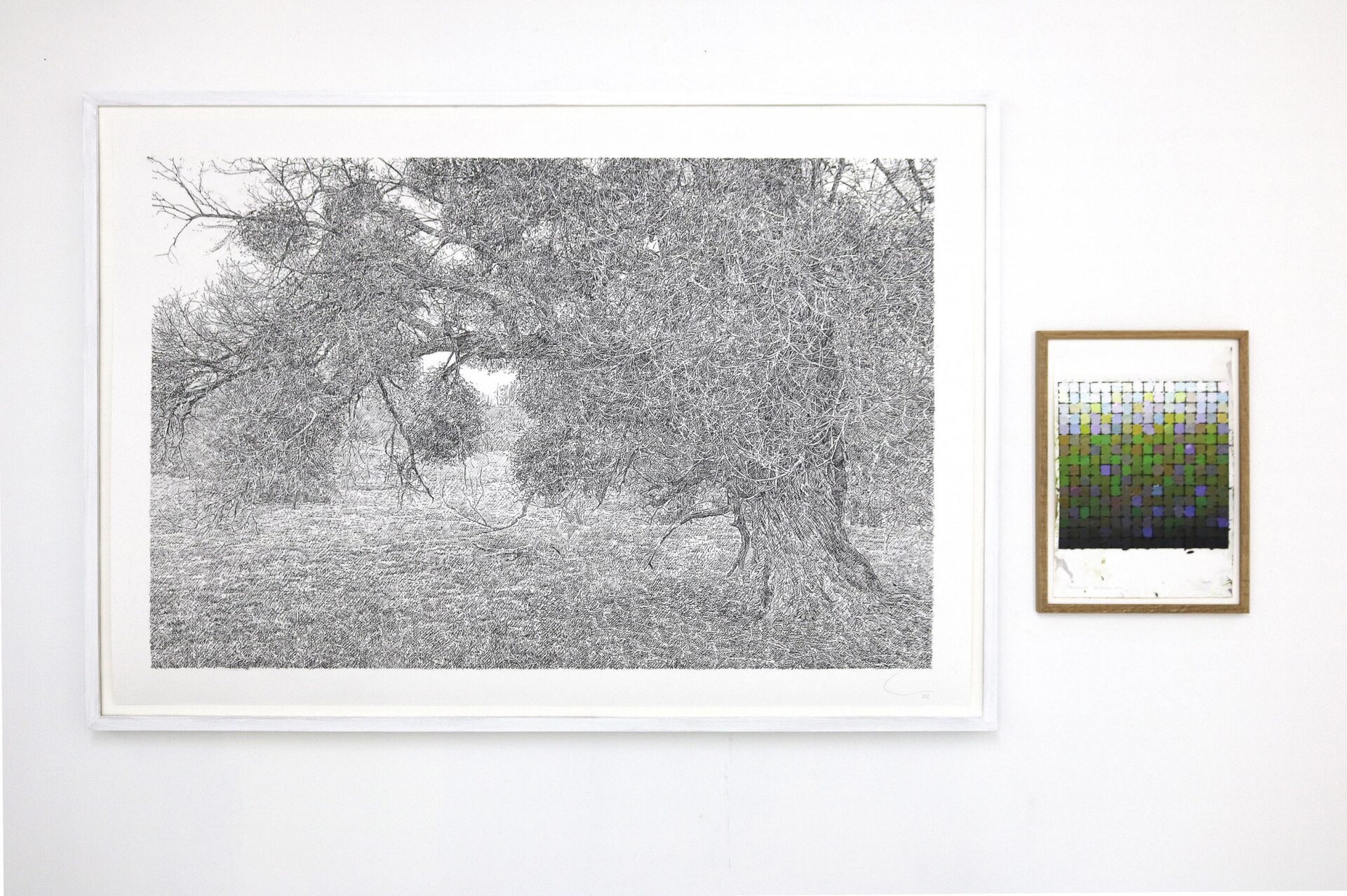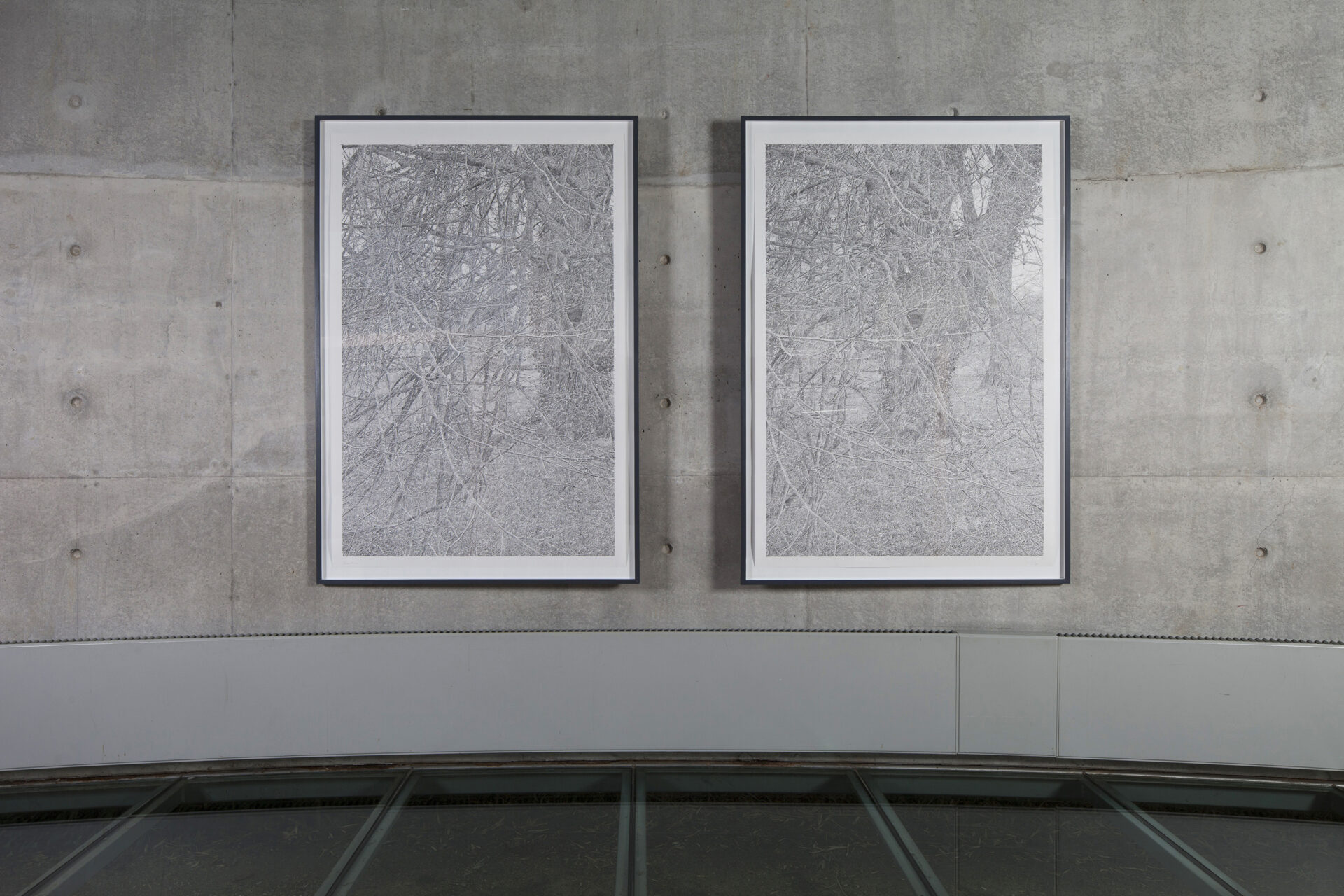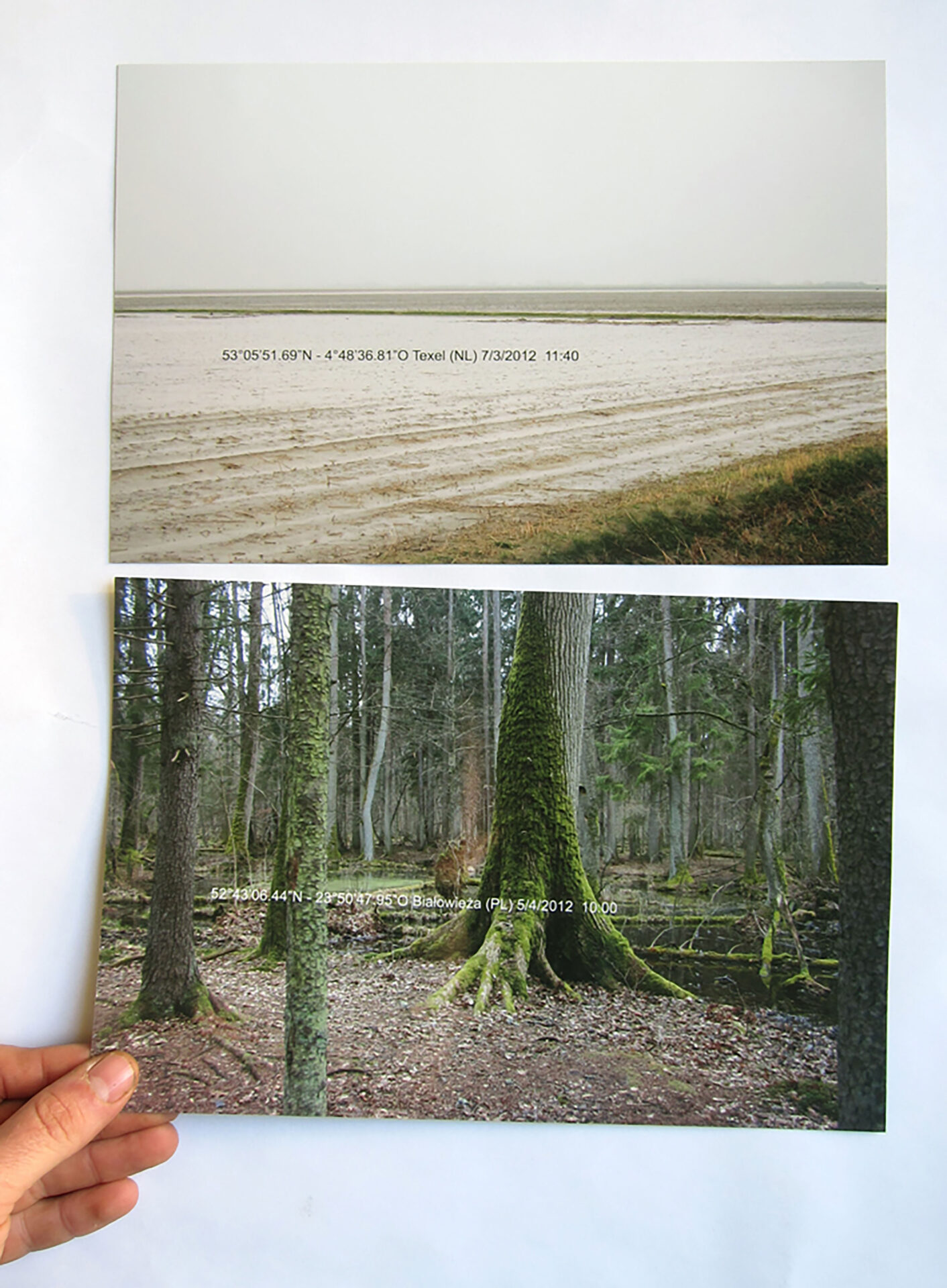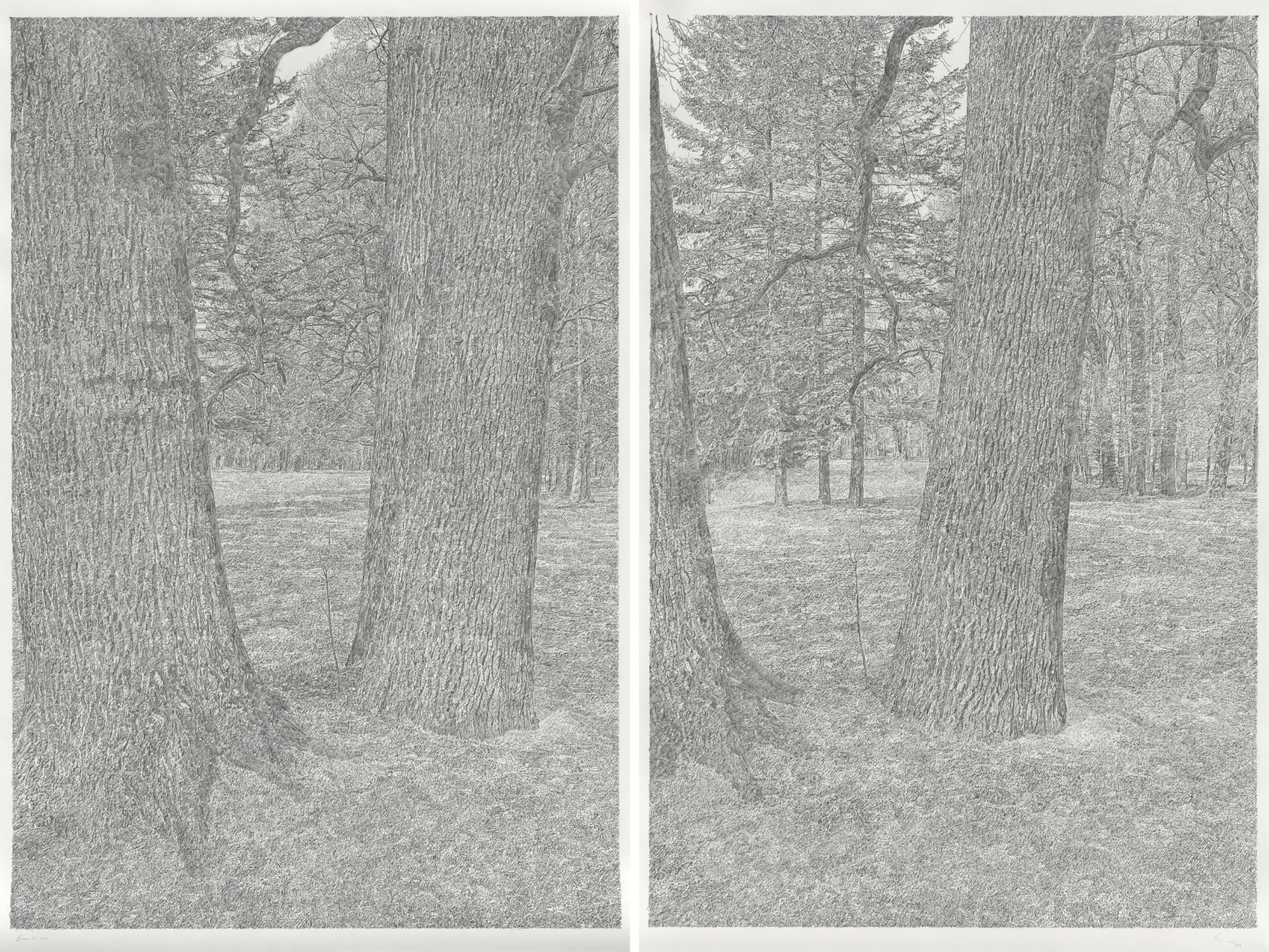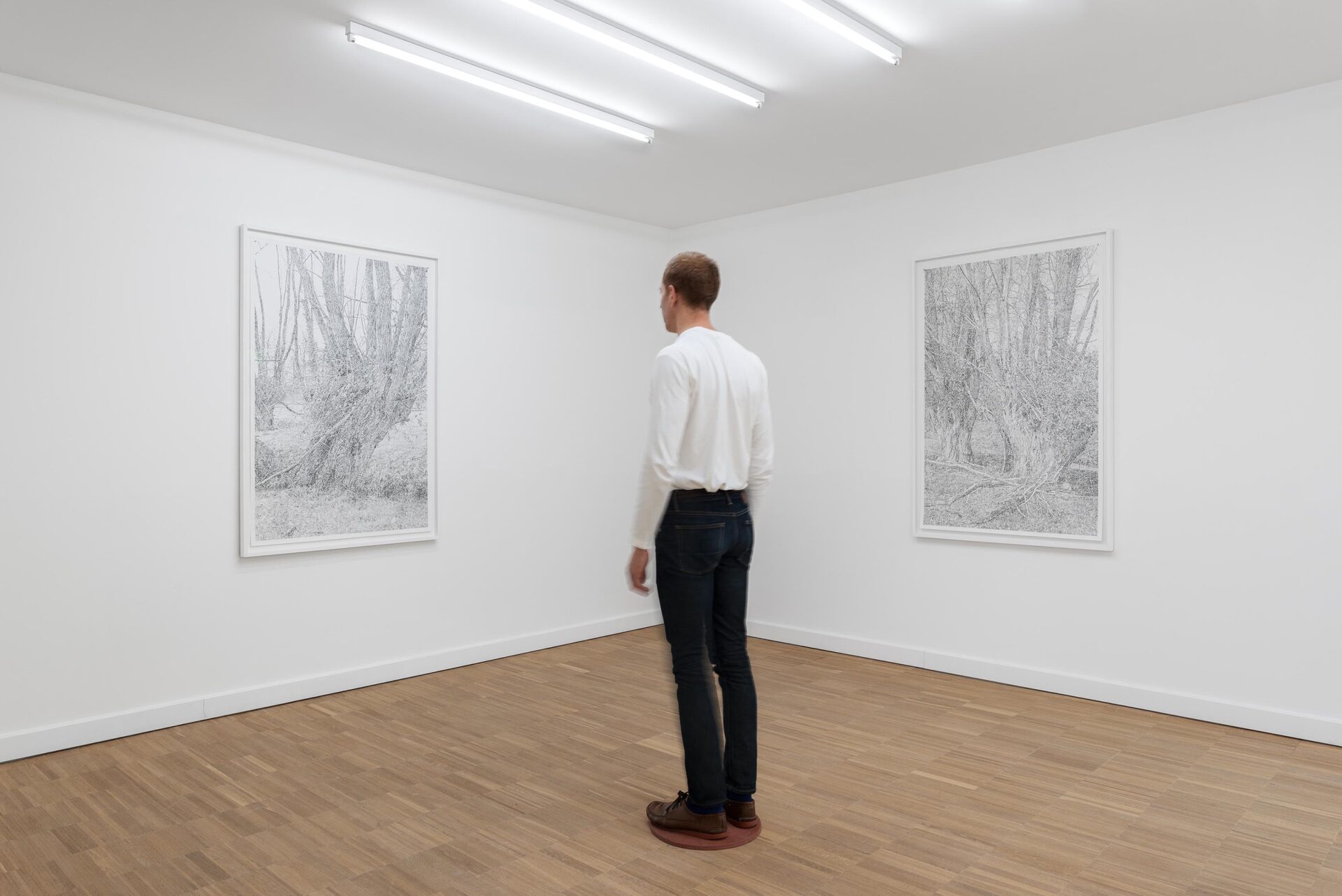
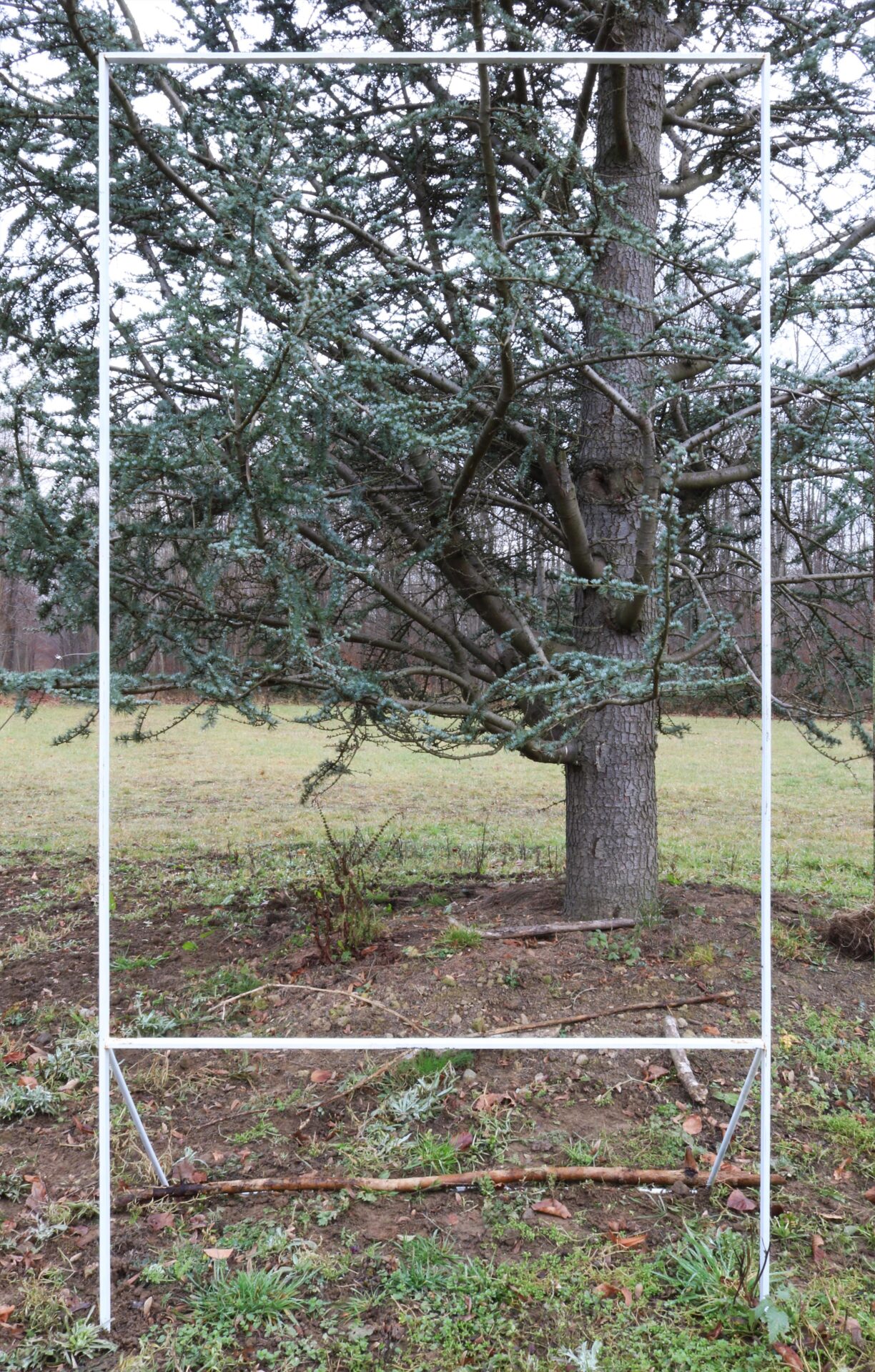




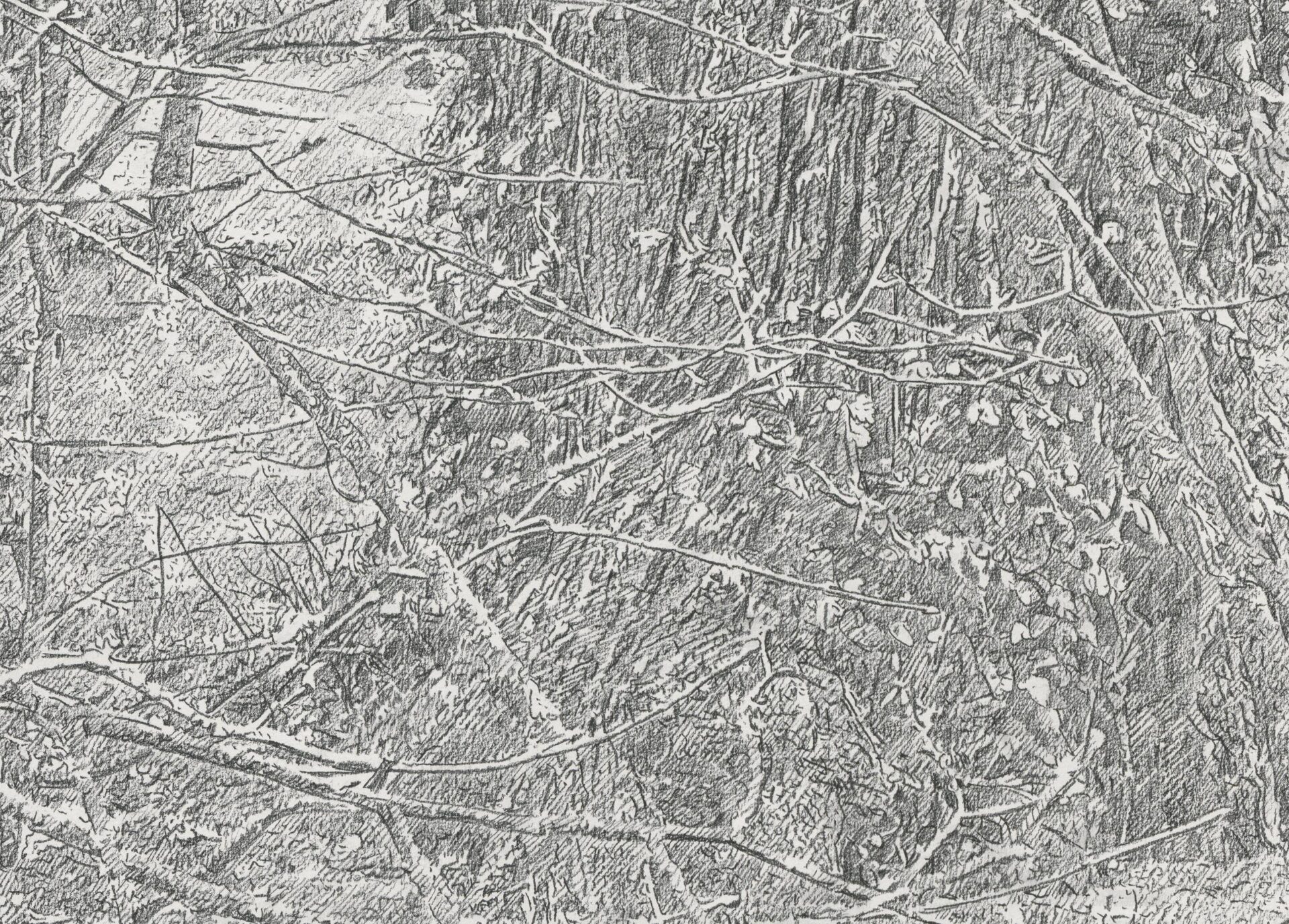
De tekeningen van Stijn Cole lijken machinaal gemaakt, Cole leerde zichzelf een techniek aan waarbij hij via arceringen eenzelfde intensiteit kan aanhouden gedurende lange periodes. De 1:1 tekeningen verwijzen naar de schaal van het onderwerp. Cole plaatste een kader in het landschap en fotografeerde vanop een bepaalde afstand het landschap door dit kader. De positie van zijn camera wordt door een keramische schijf op de grond aangetoond. Vanop deze plek ziet de toeschouwer het werk op ware grootte alsof het een venster op de realiteit zou zijn. Cole begon tekeningen te maken toen hij het verschuiven van het perspectief afhankelijk van de positie van waarnaar men een onderwerp bekijkt, als onderwerp van zijn werk wou maken. Met fotografische beelden kon hij een toeschouwer er niet toe bewegen dichterbij te komen, met zijn tekeningen slaagt hij hier wel in, mensen willen van dichtbij de details bestuderen en performen zo de fysieke verplaatsing die Cole voor ogen had.
